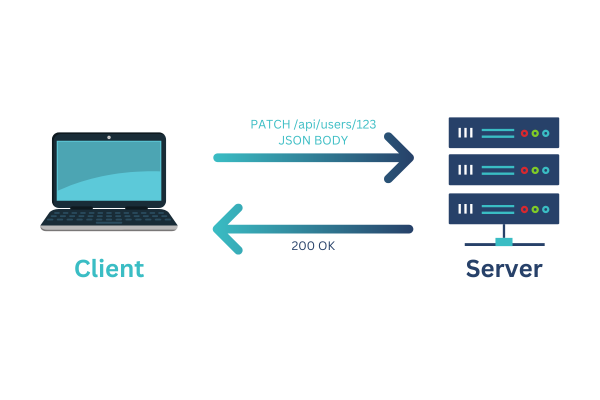In the realm of RESTful APIs (Representational State Transfer Application Programming Interfaces), the PATCH method in REST API is a powerful tool for making partial updates to resources. Unlike PUT, which replaces an entire resource, PATCH allows you to modify specific attributes, making it a more precise and efficient way to handle updates.
In this guide, we’ll uncover the key aspects of the PATCH method, its structure, use cases, and best practices to elevate your API design and development.
Why PATCH is Essential for REST APIs
PATCH provides significant advantages for resource modification:
- Granular Updates: You can target and update only the fields you want, reducing unnecessary data transfer and processing.
- Efficiency: Smaller request payloads lead to faster processing and improved network performance.
- Flexibility: Allows for updating a resource without knowing its complete representation.
- Idempotence: Multiple identical PATCH requests have the same effect as a single request, ensuring data consistency.
- Versioning Friendly: Makes it easier to evolve your API by allowing partial updates without requiring clients to send the entire resource representation.

Anatomy of a PATCH Request
A typical PATCH request includes:
- HTTP Verb: PATCH
- Endpoint (URI): The specific resource location you want to modify (e.g.,
/api/users/123). - Headers: Contain metadata like authentication tokens and content type (usually
application/json-patch+jsonor a similar patch format). - Request Body: The set of changes to apply to the resource, typically in a standardized format like JSON Patch or a custom format defined by your API.
Example: Modifying a User’s Email Address
PATCH /api/users/123 HTTP/1.1
Content-Type: application/json-patch+json
[
{ "op": "replace", "path": "/email", "value": "newemail@example.com" }
]
PATCH Method Responses
The server’s response to a PATCH request typically includes:
- 200 OK: Indicates a successful partial update, and the response body may contain the updated resource representation.
- 400 Bad Request: The request was invalid or could not be processed.
- 404 Not Found: The specified resource was not found.
Best Practices for PATCH Requests
- Choose the Right Patch Format: Select a standardized format like JSON Patch for interoperability or design a custom format that suits your API’s needs.
- Clearly Document Your Format: Provide clear documentation and examples of your PATCH request format to guide client developers.
- Validate Changes: Ensure that the requested changes are valid and don’t violate any data integrity constraints.
- Error Handling: Return appropriate status codes (e.g., 400 Bad Request, 422 Unprocessable Entity) for invalid or unsuccessful patches.
FAQs: PATCH Method in REST API
Q: Is the PATCH method always the best choice for updating resources?
A: Not necessarily. If you need to replace the entire resource, PUT is more suitable. Use PATCH for targeted, partial updates.
Q: Which patch format should I use: JSON Patch or something else?
A: JSON Patch is a widely adopted standard, offering interoperability with various tools and libraries. A custom format might be appropriate for specific use cases but could require more effort for client developers.
Q: How do I handle PATCH requests that result in conflicts?
A: Implement conflict resolution strategies on the server-side, such as optimistic locking (ETags) or merging concurrent changes.